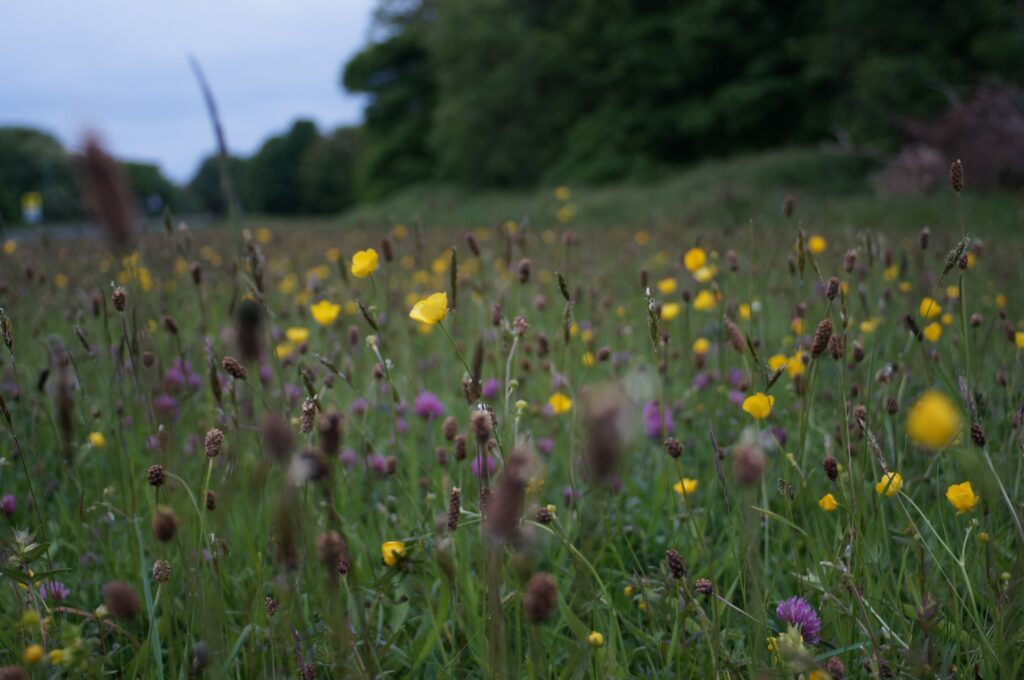Blog
Will Biodiversity Net Gain result in a financial gain for farmers?
The Government has made it a key priority to build houses. In 2017, the Conservatives had a manifesto pledge to deliver 1 million homes by the end of 2020 and to deliver half a million more by the end of 2022. However, the Prime Minister has also promised to protect biodiversity and be “the first generation to leave the environment in a better state than we found it and pass on to the next generation a natural environment protected and enhanced for the future”.
To balance these two priorities, which might be considered competing, the Government has created a new planning policy, known as Biodiversity Net Gain (BNG). BNG will require a 10% increase in biodiversity after development, compared to the baseline. It will require a careful assessment of habitats, the condition and distinctiveness of those habitats and measurement of the areas each one covers before and after development.
This policy sits within the forthcoming Environment Bill, which is still moving through Parliament. The draft Environment Bill would amend the Town and Country Planning Act 1990 to include a provision to require net gain in biodiversity. While it is yet to be enshrined into law, there has been much implementation planning already, with an expected roll-out date of 2023.
Additionality
The basis of BNG rests on the concept of additionality. This differs from the “no new loss” principle from the past. Additionality means that there has to be a clear improvement to biodiversity. It would require an increase in biodiversity measured against Defra’s Biodiversity Metric. That would mean that the local planning authority would only approve a planning application if the ‘biodiversity value’ of the finished development is greater than the ‘pre-development biodiversity value’ by at least 10%.
However, that could be quite a simplistic and crude understanding of biodiversity and landscapes. Consequently, the goal of additionality will be balanced with the value of specific species and habitats. This means that it might be that protecting a rare grassland might be weighted to score higher than pure additionality. Furthermore, irreplaceable habitats will not be eligible to be considered under BNG so as to ensure their protection.
Biodiversity Credits
However, on many development sites, it might not be realistic to deliver the BNG on site. In that scenario, developers would be able to purchase Biodiversity Credits from the Government as opposed to delivering it themselves.
This is where farmers and land-managers come into the picture. There is a key role for farmers to play in delivering Biodiversity Credits. If interested in participating in the Biodiversity Credit scheme, a farmer would be able to register a parcel of their land to the scheme, including the baseline using Defra’s Biodiversity Metric. Once the farmer has committed to delivering biodiversity increase on their holding, Government would purchase the biodiversity credit from the farmer and then sell it onto the developer on the BNG marketplace.
There is uncertainty about the future price for each unit of biodiversity credit. The estimated cost varies from £12k-£50k. The figure should be clarified by 2022. Any land that is under a BNG agreement will be required to be maintained as such for a minimum of 30 years. After that 30-year period, landowners would be able to change the use of the land parcel, however the target habitat condition of the site would be the biodiversity baseline for any future development.
Offsite BNG
However, there is another route where farmers can benefit from the new scheme. While the developer has to deliver BNG, it does not have to be in the same location as the development. A developer could work with a specific landowner to have them deliver the BNG offsite and to offset the development. This would require an individual contract to agree terms.
Some of the easiest ways for farmers to deliver additionality would be;
- Planting an orchard on a small plot of land while maintaining grazing underneath the tree canopy.
- Creating a wildlife pond to allow wetland species to thrive. This could be quite small in size, provided it was designed well and would be prioritised in lowland England.
- Allowing native scrub and thicket to emerge through a natural process.
How Wilson Wraight Can Help
As BNG comes into law, we are here to help our clients to best benefit from the new scheme. There is a significant question over how developers who desire an offsite BNG partner will be connected with farmers who can deliver it. This is where Wilson Wraight can help and we can work to broker these relationships too, and act to connect developers with our clients.
Secondly, ahead of committing to a BNG project, it would first be valuable to identify potential land parcels that could be used for BNG. Our consultants are able to consider which areas of a holding would be most appropriate for BNG and, using our new WW Analytics tool, assess the profitability of BNG at a field-by-field level. We would recommend calculating the biodiversity baseline as soon as possible and can help by working with clients and Biodiversity Metric 3.0 assessors to calculate the baseline.
If you are interested in learning more about Biodiversity Net Gain and how it might benefit your business, please get in touch.

